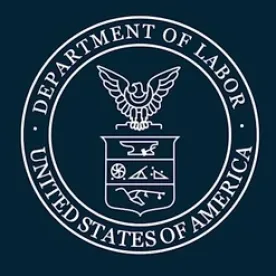DOL AGENCY DEVELOPMENTS
Overtime Exemption Regulations
In 2019, the DOL issued a Final Rule updating the minimum salary requirements for the “white collar” (executive, administrative, and professional) overtime exemptions. The new rule went into effect on January 1, 2020.
Under the Final Rule, the annual salary level for these exemptions will increase to $35,568, or $684 per week, a 50% increase from the current level of $23,660 ($455 per week). In addition, the annual minimum compensation for highly compensated employees (HCE) also will increase, from $100,000 to $107,432, well below the minimum HCE compensation set in both the Obama-era Rule and in the Notice of Proposed Rulemaking issued in March 2019.
Consistent with the Obama-era rule, employers will be permitted to use nondiscretionary compensation, including commissions, to satisfy up to 10% of the new standard salary level. Unlike the Obama-era rule, however, under the new Final Rule, nondiscretionary compensation may be paid annually rather than quarterly, providing employers with more flexibility in paying exempt employees nondiscretionary bonuses and commissions to satisfy the salary level requirement.
The new Final Rule also permits a catch-up payment at year’s end, up to 10% of the standard salary level (i.e., $3,556.80), if the employee has not earned sufficient nondiscretionary pay to satisfy the required salary. By contrast, for HCE, the standard salary level ($35,568) must be met without including any nondiscretionary pay, although such pay can be included in meeting the annual compensation requirement of $107,432.
The DOL has not made any changes to the duties test and has not provided for any automatic increases, although it anticipates updating the salary level every four years through notice-and-comment rulemaking.
Regular Rate Regulations
In December 2019, the DOL issued its Final Rule revising the regulations governing the calculation of the regular rate under the FLSA.
The FLSA generally requires employers to pay nonexempt employees overtime pay at one-and-one-half times their “regular rate” for all hours worked over 40 in a given workweek. The regular rate is defined, with a few exceptions, as all “remuneration for employment paid to, or on behalf of, the employee,” divided by the total number of hours worked during that week.
Employers sometimes struggle, however, with properly determining the regular rate when providing various benefits and other forms of compensation to their employees in the modern workplace. The Final Rule, which became effective on January 15, 2020, seeks to clarify what forms of benefits and other compensation must, and need not, be included in the regular rate calculation.
While unlikely to eliminate all problems stemming from the oft-confounding regular rate determination, the revised regulations should provide some much-needed clarity and updated guidance to employers in their efforts to comply with the FLSA.
The revised regulations are quite lengthy. They:
-
Clarify that payments for “paid time off” (PTO), when not worked, as well as payouts for unused PTO, need not be included in the regular rate, as this is pay for non-working time.
-
Address an apparent contradiction in the current regulations on whether pay for “bona fide meal periods” is excludable from the regular rate. The DOL proposes to amend the regulations to remove the reference to “lunch periods” in 29 C.F.R. § 778.218(b) to “eliminate any uncertainty about its relation to [Section] 778.320 concerning the excludability of payments for bona fide meal periods from the regular rate.”
-
Remove the word “solely” from the current regulations to clarify that an employee’s reimbursable business expenses are excludable if they are incurred “in the furtherance of [the] employer’s interests,” even if they also might benefit the employee to some extent.
-
Clarify what constitutes a “reasonable” expense within the meaning of 29 C.F.R. § 778.217(b) and excludable from the regular rate.
-
Add a number of additional examples to the non-exhaustive list in the existing regulations of benefits excludable from the regular rate to include “conveniences furnished to the employee,” such as on-site chiropractic treatment, massage therapy, physical therapy, and personal training services; gym, fitness, and recreational classes and memberships; modern “wellness programs” such as health screenings, vaccinations, smoking cessation support, and nutrition classes; discounts on employer-provided retail goods and services; and tuition benefits.
-
Clarify that recent state and local laws, requiring “reporting pay” for employees who are unable to work their scheduled hours, because the employer subtracted hours from a regular shift before or after the employee reports to duty, will be treated as “showup” pay under existing regulations. The DOL refers to proposed laws in Arizona, Connecticut, Illinois, Massachusetts, Maryland, New York, and Chicago.
-
Eliminate the requirement that call-back payments be received only on an “infrequent” or “sporadic” basis for the exclusion to apply, although they cannot be “so regular that they are essentially prearranged.” Similarly, the proposed regulations provide that predictability/scheduling pay (for failing to provide a certain minimum advance notice of the work schedule) and “clopening” pay (for failing to provide a certain minimum break between working a closing shift and the subsequent opening shift) — something recently enacted or proposed in several states — may be excluded from the regular rate of pay, so long as they too are not so regular that they are essentially prearranged.
-
Seek to elaborate on the types of bonuses that are, and are not, “discretionary” and, therefore, excludable from the regular rate calculation.
-
Add more examples of the types of modern benefit plans that may be excludable from the regular rate of pay.
-
Remove language from the existing regulations to clarify when employers may exclude from the regular rate certain overtime premium payments made for hours of work on special days or in excess or outside of specified daily or weekly standard work periods.
Tip Pooling
In October 2019, the DOL issued a Notice of Proposed Rulemaking (NPRM), seeking to eliminate the “20% Rule” or “80/20 Rule,” which first appeared in a DOL Field Operations Handbook (FOH) in 1988.
The 20% Rule, long a thorn in the side of hospitality employers and spawning substantial litigation, requires employers to pay tipped employees the full minimum wage, rather than the lower cash wage applicable to tipped employees, if the employees spend more than 20% of their time performing allegedly nontipped duties. However, the DOL never defined what constituted tipped versus non-tipped duties.
The DOL abrogated the Rule in a November 2018 Opinion Letter and again in a February 2019 FOH amendment, but courts have since split on whether the DOL’s latest guidance deserves deference. The proposed regulation seeks to elevate that guidance to the regulatory level and rescind the former regulation that was the genesis of the Rule.
The NPRM further seeks to implement changes made by the Consolidated Appropriations Act (CAA) of 2018 regarding tip pooling. The CAA prohibits employers, managers, or supervisors from keeping employees’ tips, including from a tip pool, regardless of whether the employer takes a tip credit under the FLSA. It allows employers to mandate a tip pool that includes traditionally tipped (e.g., servers and bartenders) and non-tipped (e.g., cooks and dishwashers) positions if the employer does not pay the tipped employees using a tip credit (that is, the employee is paid the full minimum wage without any credit for tips). The proposed rule clarifies who is considered a “supervisor” or “manager” and, thereby, is excluded from receiving tips (regardless of whether a tip credit is taken).
Employers implementing policies regarding tipped employees also must consider state laws, which may provide different rules for tip credits or even disallow them altogether. The final rule likely will be released in 2020.
Joint Employer Standard
In April 2019, the DOL issued an NPRM to update its interpretation of the standard for establishing joint employer liability under the FLSA.
Characterized as a “deregulatory proposal” by now former Secretary of Labor Alexander Acosta, the proposed test for joint-employer liability would limit such liability to circumstances where the purported joint employer exercised direct or indirect control over an individual’s terms and conditions of employment.
The NPRM proposes to replace the “not completely disassociated” test with one that focuses on “the potential joint employer’s exercise of control over the terms and conditions of the employee’s work” and, citing a longstanding U.S. Supreme Court decision, frames the primary question as whether the purported joint employer “exercises substantial control over the terms and conditions of the employee’s work.”
The DOL proposes a four-factor balancing test assessing whether the purported joint employer:
-
Hires or fires the employee; • Supervises and controls the employee’s work schedules or conditions of employment;
-
Determines the employee’s rate and method of payment; and
-
Maintains the employee’s employment records.
Moreover, the DOL limits the test to “actions taken with respect to the employee’s terms and conditions of employment, rather than the theoretical ability” to take such actions.
The new rule likely will be issued in 2020. If adopted by the courts, the proposed test should be welcome news for franchisors, staffing agencies, and other businesses that have faced uncertainty regarding their exposure to liability as joint employers under the FLSA.
Note: on January 12, 2020 the DOL issued its final rule, adopting the test set forth in the NPRM.
Fluctuating Workweek (FWW) Pay Method
Under DOL regulations, if certain conditions are met, an employer may pay an employee who works fluctuating hours a fixed salary for all hours worked, and then an additional half-time for all hours over 40, a number that decreases as the number of hours increases. Although DOL regulations expressly permit employers to use it, uncertainty regarding its requirements and the potential for litigation (particularly during the last 10 years) has limited employer use of the pay method.
In a NPRM issued in November 2019, the DOL intends to clarify that employers may provide additional pay, such as bonuses or premiums, to employees subject to the FWW method, even when the additional pay is tied to the number of hours worked, without jeopardizing the use of that pay method.
Since the current rule was issued in 2011, courts have reached inconsistent conclusions on whether such additional compensation is permitted under the FWW pay method. As a result, some courts have permitted so-called production bonuses, but not hours-based bonuses, under the FWW pay method, a distinction the DOL asserts in the NPRM it has never made.
In the NPRM, the DOL seeks to clarify that such bonuses, premiums, and other compensation, in fact, is permitted when using the FWW pay method, regardless of whether such compensation is hours- or performance-based. The final rule is expected in 2020. If the proposed rule is finalized, employers clearly will be able to further reward productive non-exempt, salaried employees eligible to receive such additional compensation. Thus, the rule not only should bring some clarity to the FWW method, but revive its use, which has waned in the years following the 2011 Rule.
Truck Drivers’ Sleeping Berth Time Presumed Non-Compensable
In a welcome reversal of its prior guidance, on July 22, 2019, the DOL embraced the plain language of 29 C.F.R. § 785.41 and concluded that if a truck driver, or driver’s assistant or helper, is completely relieved of duty and is provided with adequate sleeping facilities (including the truck’s sleeping berth), the individual is not “working while riding” and, therefore, is not entitled to compensation for that time — regardless of how many hours a particular trip lasts or how much duty-free time is provided on that trip. DOL Wage & Hour Division Opinion Letter FLSA2019-10.
Admitting that its most recent prior guidance was “unnecessarily burdensome” on employers, the DOL withdrew five previous opinion letters and directly disagreed with recent judicial opinions that relied on the prior guidance, under which only up to eight hours of sleeping time could be excluded in a trip 24 hours or longer, and no sleeping time could be excluded for trips under 24 hours.




 />i
/>i

